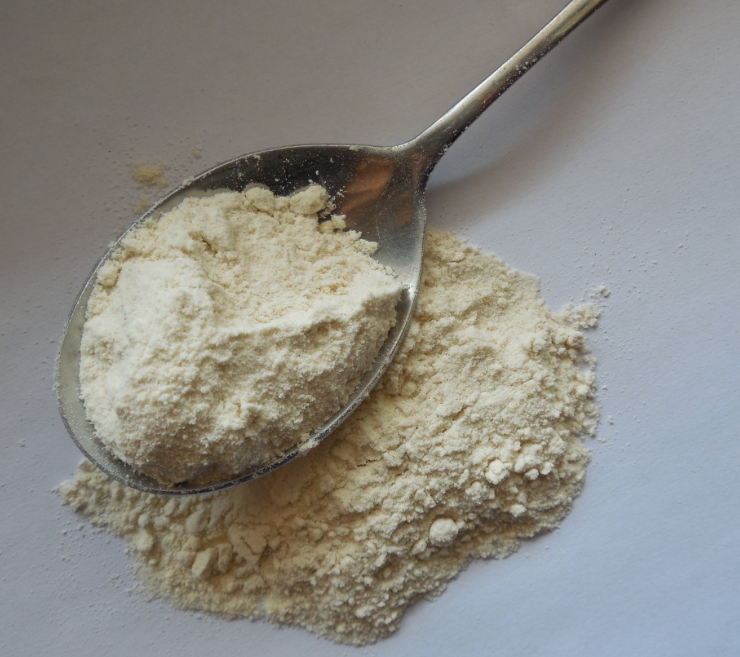What does baking powder do? Baking powder is a chemical leavening ingredient that is made up of a carbonate or bicarbonate and a weak acid. The presence of a buffer, such as cornstarch, prevents the base and acid from interacting prematurely.
Baking powder is used to increase the volume of baked foods and lighten their texture. Through an acid–base reaction, carbon dioxide gas is released into a batter or dough, producing bubbles in the wet liquid to expand and leaven the mixture.
In 1843, food maker Alfred Bird in England invented the first single-acting baking powder, which releases carbon dioxide at room temperature as soon as it is wet. Eben Norton Horsford invented the first double-acting baking powder in the United States in the 1860s, which releases some carbon dioxide when moistened and then releases more when heated by baking.
 What are the main ingredients of baking powder? What does baking powder do?
What are the main ingredients of baking powder? What does baking powder do?
A baking powder’s main ingredients are a dry acid, a base, and a filler. Each of these materials can have a substantial impact on the ultimate product’s texture and flavor.

Baking soda, commonly known as sodium bicarbonate, is the most common dry base used in baking powders. It’s a white crystalline substance that dissolves in water and releases carbon dioxide gas when heated above 122°F (50°C).
In a baking powder formula, the type of acid utilized is more diverse. Cream of tartar, a powdered acid, was employed in the first baking powders. It reacted swiftly and needed to be put in the oven right away or the gas would run out. This substance was ideal for items such as pancakes and muffins.
Monocalcium phosphate (CaHO4P), sodium acid pyrophosphate (H2Na207P2), sodium aluminum phosphate (H304P), and sodium aluminum sulfate are the four primary acids utilized in commercial baking powders today (NaAl08S2).
Other Ingredients
Monocalcium phosphate is a fast-acting acid that releases a lot of gas in three minutes after it’s mixed with baking soda. This is almost twice as fast as other acids. The acid sodium acid pyrophosphate is utilized in refrigerated biscuit dough recipes since it is a slower reacting acid. When heated, sodium aluminum phosphate and sodium aluminum sulfate are also slow reacting acids that produce gas.
While these chemicals are utilized, most bakers choose aluminum-free baking powders since metal can impart an unpleasant flavor to baked goods.
An inert filler is the third primary component of baking powders. Cornstarch is the most prevalent of these. There are three uses for cornstarch.
For starters, it keeps the product dry and easy to flow. Without it, baking powder containers may clump together and form a big mass.
Second, it keeps the acids and bases apart during storage, preventing them from reacting. Finally, it gives the powder more volume, making it easier to measure and standardize.
Is baking powder necessary?
Baking powder is a rising agent. It contains alkaline baking soda and a sour ingredient, such as cream of tartar or citrus acid powder.
These compounds react during baking, and the oxygen produced as a result of this reaction causes the dough to rise. Your baked item will be light and fluffy if you use a raising agent. If you leave it out, you’ll get the opposite outcome.
Baking powder and baking soda are commonly used in American cuisine. When baking soda is used alone, it can leave a strange taste if used too much or if it is not combined with something sour, such as buttermilk or lemon juice. It is common in Europe to just use baking powder.
Can I make my own baking powder?
If you run out of baking powder or you forget to buy it at the store you can make your own baking powder using three simple ingredients.
Follow this recipe:
Ingredients – (what does baking powder do):
(Makes 2 cups or 16oz)
-
-
- ½ cup baking soda
- 1 cup cream of tartar
- ½ cup arrowroot powder
-
Instructions
Combine all of the ingredients and store them in an airtight jar in your pantry or refrigerator.
What is the difference between baking soda and powder?
The most significant difference between baking soda and baking powder is that baking powder contains an acid already in the chemical mixture, whereas baking soda requires an acidic ingredient in order to produce the rising reaction that causes the cake to rise.
Making biscuits, corn bread, or pancakes with baking soda is a good idea if your recipe contains acidic ingredients like buttermilk, lemon juice, or vinegar; making them with baking powder is a good idea if your recipe does not contain acidic ingredients.
For more on this topic read this article.
What is the shelf life of baking powder? What does baking powder do?
The use of baking powder is also generally considered to be safe, but baking powder loses its effectiveness as a leavener over time.
A can of baking powder that has not been opened will keep for up to 18 months. A container of baking powder that has been opened should be replaced every three to six months, depending on how much of it has been exposed to air and humidity during that time. As a result of the presence of both an acid and a base in baking powder, it reacts to moisture in a way that baking soda does not.
How do I know if my baking powder is still good?
To check the freshness of your baking powder, combine 1/2 teaspoon baking powder with a tablespoon of hot water in a small mixing bowl. Baking powder is still good if the mixture bubbles after it has been mixed.
The Most Effective Methods of Storing Baking Powder and Baking Soda
Baking powder and baking soda should be kept in a dry cupboard away from the stove, dishwasher, sink, and any other sources of moisture that may accumulate. Moisture and/or humidity will cause baking powder to react, and if the water contains any acidity, it will cause baking soda to react in the can as well.


Great info!